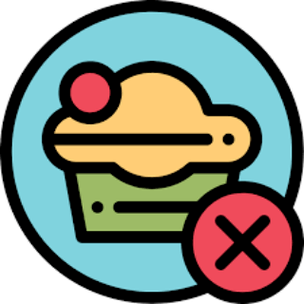The Japanese diet has become widely popular among people looking to lose weight. Above all, they are drawn to the short time (only 14 days) and the availability of the required products.
How the Japanese diet came into being
Many people think that the Japanese diet is related to the daily diet of its residents, but it is not. Most likely, the diet got this name due to the strict adherence to the diet and its high efficiency. The Japanese are very responsible and responsible people, they approach any business with all attention and adhere to the established rules exactly, that's why they get results. high.
Another version of the appearance of the name is where the diet is coined. It is believed to have been developed at the Yaeks Japanese clinic. Nutritionist Naomi Moriyama, who developed the weight loss system, completely believes in the product's effectiveness and adaptability to the normal European diet, who has a significantly different taste. compared with the Japanese.
Benefits of the Japanese-style diet

The Japanese diet will help cleanse the body from toxins, as well as bring the metabolism in order in just 14 days.
A large amount of fruit will provide the body with saturated fiber and help improve intestinal function, and a sufficient amount of food will maintain a feeling of fullness and high performance.
Features and principles
Unlike many other diets, this one does not include fractional nutrition. It is designed for three meals without additional snacks. You cannot change the date of the diet in all places and by all means try to "improve" the diet, otherwise it is no longer the Japanese diet and will have to start over.
Every morning you should drink a glass of cool water, it will help speed up metabolism and get rid of hunger. The rest of the time, also drink pure mineral water (non-carbonated) or boiled water as possible.
Shopping list

In order to successfully maintain your diet, buy the following foods:
- 1 pack of green tea as you like. Make sure there are no flavors in the composition.
- 1 packet of fine (or ground) coffee beans.
- 2 trays (20 pcs) Chicken eggs.
- 1 kg. chicken fillet (breast).
- 1 kg. beef (preferably lean).
- 2 kg. sea fish fillet.
- 0, 5 l. virgin olive oil.
- 2 medium white cabbage.
- 1 kg. zucchini or eggplant.
- 2-3 kg. fresh carrots.
- 1 kg. any fruit other than bananas and grapes.
- 1 L. tomato juice.
- 1 L. kefir.
- 2 lemons.
All terms must be new and best you can find.
What not to be in the diet

Completely avoid sugar and salt in the Japanese diet. The same rule applies to all baked goods, candies and alcoholic beverages.
Japanese daily diet menu
The Japanese diet is very similar to the famous chemical diet, often used to treat obesity in diabetics. It also uses the effect of reducing the amount of carbohydrates while increasing the protein ratio.
Diet is quite strict, no change in it is allowed.
1 day
- Breakfast: black coffee with no added sugar, sweeteners or milk.
- Lunch: 2 hard-boiled eggs, boiled cabbage, seasoned with vegetable oil and a glass of tomato juice.
- Dinner: 200 gr. fried or boiled fish.
Day 2
- Breakfast: Black coffee with a slice of rye bread.
- Lunch: boiled cabbage with vegetable oil + 200 gr. fried or boiled fish.
- Dinner: a glass of kefir 100 gr. boiled beef.
Day 3
- Breakfast: Black coffee with a slice of reheated rye bread in a toaster (you can replace it with flavorless biscuits without flavor).
- Lunch: any number of zucchini or eggplants fried in vegetable oil.
- Dinner: raw cabbage salad, seasoning with vegetable oil + 200 gr. Unsalted boiled beef.
4th
- Breakfast: medium-sized fresh carrots, chopped on a squeezer or in any other convenient way + lemon juice.
- Lunch: a glass of tomato juice + 200 gr. boiled or fried fish.
- Dinner: salad from 200 gr. any fruit.
Day 5
- Breakfast: medium-sized fresh carrots, chopped on a squeezer or in any other convenient way + lemon juice.
- Lunch: a glass of tomato juice + 200 gr. Boiled fish.
- Dinner: 200 gr. any fresh fruit.
6th
- Breakfast: black coffee without additives.
- Lunch: 500 gr. boiled chicken breast without salt + carrot and cabbage salad, seasoned with oil.
- Dinner: a fresh carrot + 2 hard boiled eggs.
7th
- Breakfast: a glass of green tea.
- Lunch: 200 gr. Unsalted boiled beef.
- Dinner: 200 gr. any fresh fruit, or 200 grams. boiled or fried fish, or 2 boiled eggs + fresh carrots, or a piece of boiled beef with a glass of kefir.
Day 8
- Breakfast: black coffee.
- Lunch: 500 gr. Unsalted boiled chicken breast + raw carrot salad with cabbage, vegetable oil.
- Dinner: 2 boiled eggs + fresh carrot salad with vegetable oil.
9th
- Breakfast: fresh carrots soaked in lemon juice.
- Lunch: 200 gr. boiled or fried fish with a glass of tomato juice.
- Dinner: 200 gr. any fresh fruit.
10th
- Breakfast: black coffee without sugar.
- Lunch: 3 carrots with vegetable oil + boiled egg + 50 gr. cheese.
- Dinner: 200 gr. any fresh fruit.
Day 11
- Breakfast: Unsweetened black coffee with a slice of rye bread.
- Lunch: some eggplant or zucchini sautéed with vegetable oil.
- Dinner: 200 gr. Boiled unsalted beef, fresh cabbage salad, spices with vegetable oil and 2 boiled eggs.
12nd
- Breakfast: black coffee.
- Lunch: 200 gr. Fish boiled or fried with fresh cabbage salad, spices with vegetable oil.
- Dinner: a glass of kefir + 100 gr. Unsalted boiled beef.
13th
- Breakfast: black coffee without additives.
- Lunch: boiled cabbage, seasoned with vegetable oil + a glass of tomato juice + 2 boiled eggs.
- Dinner: 200 gr. Beef boiled or fried in vegetable oil.
Day 14
- Breakfast: black coffee without additives.
- Lunch: 200 gr. Boiled or fried fish, fresh cabbage salad, spices with olive oil.
- Dinner: 200 gr. unsalted boiled beef + a glass of kefir.
How to maintain the diet

In order not to break your diet at the most inopportune moment, try to follow the recommendations:
- Schedule for months with no major holidays and travel;
- always remember the motivation that drives you to lose weight;
- find yourself a hobby;
- argue with a loved one that you won't break;
- Just believe in your own strength!
How to join and get rid of the Japanese diet
Any diet puts a lot of stress on the body, so you should prepare for it in advance.

At least a week before your scheduled date, start limiting your sugar intake, and also gradually reduce your food portion sizes. Also try to reduce (or even exclude) from your diet all dishes that can be classified as "fast food", "sweet" or "starchy". For example, if you eat 5 pies per day, then one pie should be eliminated from your diet per day per week. Then, on the first day of the diet, the body will live peacefully for 2 days without the need for cakes.
Many feel that equipping various Japanese accessories (chopsticks, tea ceremonies, figurines, etc. ) is a great help. They will help you correct your psychology.
When the diet is over, in no case should you immediately run and overeat your favorite foods. Start gradually introducing familiar foods into your diet, starting with small portions. After that, the effect of weight loss should be maintained for a few years, as the diet should not be repeated earlier. The best solution is to introduce yourself to the right nutrition, which will allow you to stay in shape at all times.
Contraindicated
There is no ideal diet, so even this system cannot suit everyone. First of all, during nutritional restriction, the body is forced to undergo serious psychological tests. This is especially true for those living in big cities where you can find all kinds of cafes and fast food at every step. Also, during dieting, nutrient access is severely restricted, and this puts additional stress on the body.
If a person has problems with the work of the cardiovascular, kidney or liver system, he suffers from chronic gastritis or has an ulcer, then he should not be on a Japanese diet. Otherwise, all illnesses could be aggravated: large amounts of fluid will affect the kidneys, green tea and coffee have a strong impact on the heart due to the high caffeine content.
Additionally, limiting salt can have serious consequences. Any doctor will confirm that a small amount of salt is simply required for the body to function properly, and the strong rejection leads to fluid withdrawal and blood thickening in the vessels. So many experts still recommend adding a little salt to your food, despite strict dietary recommendations.
The Japanese-style diet has many advantages, is easy to tolerate, but can be contraindicated in people with a number of diseases. Gwyneth Paltrow and many other celebrities have effectively lost weight thanks to that.































